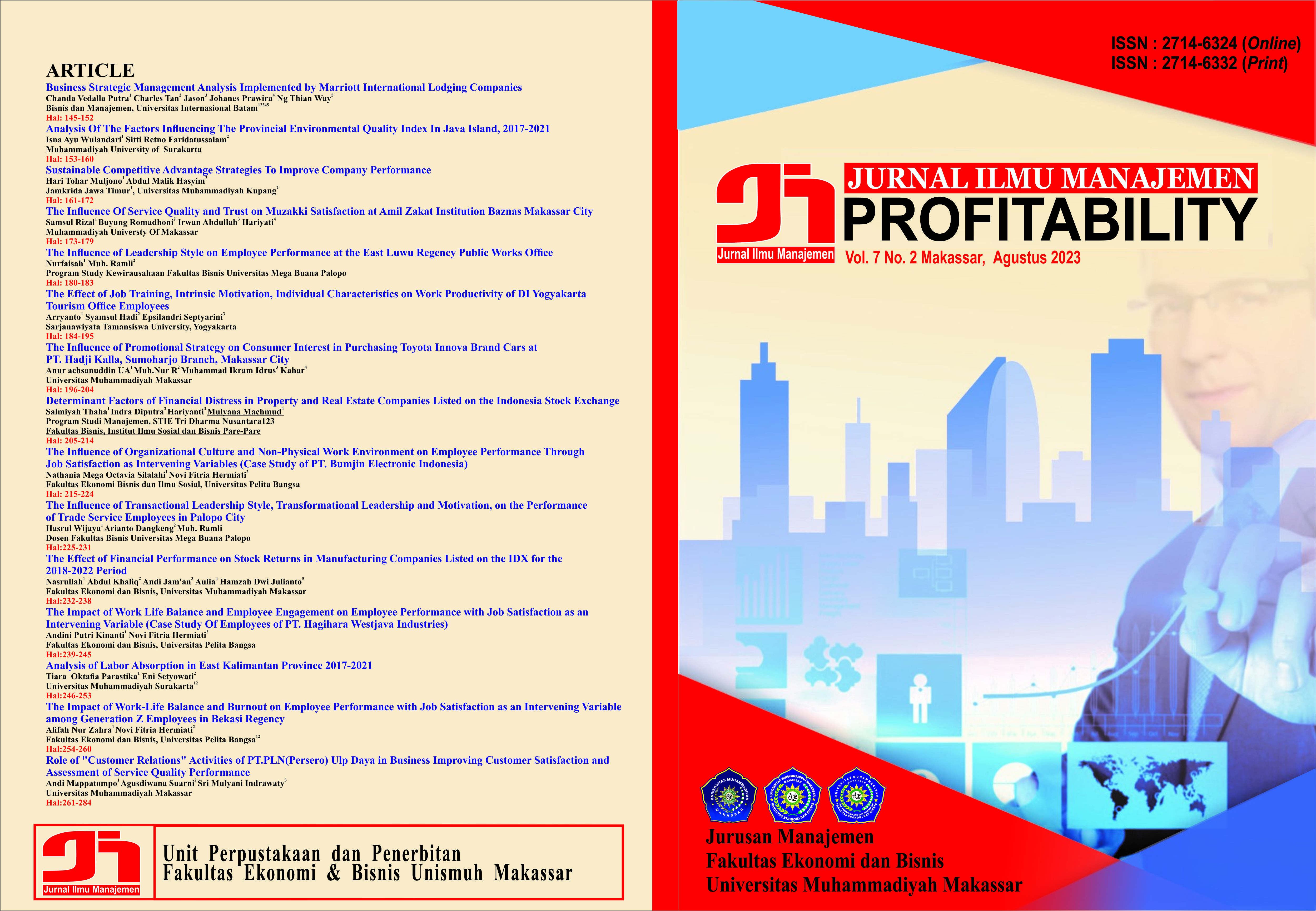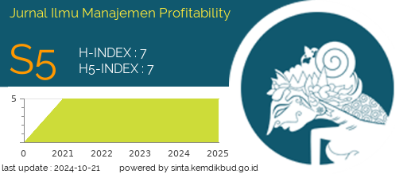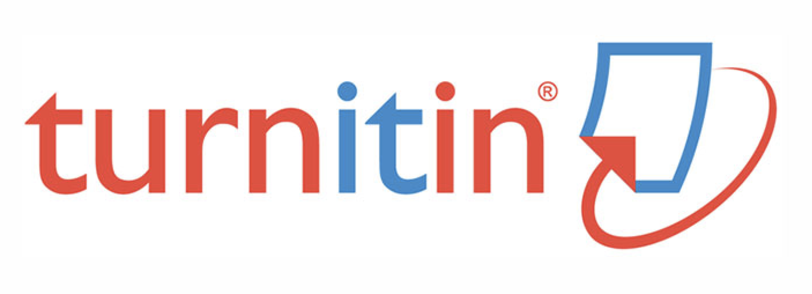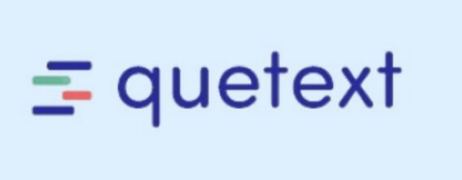Analysis of Labor Absorption in East Kalimantan Province 2017-2021
DOI: https://doi.org/10.26618/profitability.v7i2.11949
Minimum Wage, Gross Regional Domestic Product, Human Development Index.
Abstract
Opening up job opportunities for the larger community is one method to foster fair prosperity, keeping in mind that society is one of the key determinants of an area's economy. Therefore, the purpose of this study is to ascertain the impact of the East Kalimantan Province's District Minimum Wage (UMK), Gross Regional Domestic Product (GRDP), and Human Development Index (IPM). Penelitian was conducted between the years of 2017 and 2021 in 10 cities and towns in the province of Kalimantan Timur using a data panel analysis tool called Eviews 9.0. According to the results of the analysis, it can be concluded that there is a positive relationship between the variables UMK and PDRB and the hiring of temporary workers in Kalimantan. Similar to this, the IPM variable shows a negative trend regarding the hiring of laborers in Kalimantan.References
Pangest, A. D., & Nano Prawoto. (2018). Analisis Faktor yang Mempengaruhi Penyerapan Tenaga Kerja Sektor Perdagangan: Studi Kasus di 14 Kabupaten/Kota di Jawa Timur. Journal of Economics Research and Social Sciences, 130-135.
Alamsyah, & Effendi, M. (2020). Pengaruh Tingkat Pendidikan dan Upah Minimum terhadap Penyerapan Tenaga Kerja di Provinsi Kalimantan Selatan Tahun 2014 – 2018. JIEP: Jurnal Ilmu Ekonomi dan Pembangunan, 500-515.
Aliisman. (2018). Analisis Pengaruh Pertumbuhan Ekonomi Dan Pengeluaran Pemerintah Terhadap Penyerapan Tenaga Kerja Di Kabupaten Aceh Barat. Jurnal REP (Riset Ekonomi Pembangunan).
Armawaddin, M., & Afiat, M. N. (2018). Models Spesification of Economic Growth: Evidence From Province in Sulawesi. Quantitative Economics Research, 68–78.
Atiyatna, D. P., Muhyiddin, N. T., & Soebyakto, B. B. (2016). Pengaruh upah minimum, pertumbuhan ekonomi dan pendididikan terhadap penyerapan tenaga kerja di Provinsi Sumatera Selatan . Jurnal Ekonomi Pembangunan, 8-21.
Habanabakize, T., Meyer, D. F., & Olah, J. (2019). The Impact of Productivity, Investment and Real Wages on Employment Absorption Rate in South Africa. Social Sciences.
Hartono, R., Busari, A., & Awaluddin, M. (2018). Pengaruh produk domestik regional bruto (pdrb) dan upah minimum kota (umk) terhadap penyerapan tenaga kerja. INOVASI, 36-43..
Indradewa, I. A., & Natha, K. S. (2015). Pengaruh Inflasi, Pdrb dan Upah Minimum Terhadap Penyerapan Tenaga Kerja Di Provinsi Bali. E-¬Jurnal EP Unud, 923-950.
Nugroho, A. B., & Moonti, U. (2019). Analysis of the Effect of Capital Expenditures, Economic Growth and Education Levels on Labor Absorption. Jambura Equilibrium Journal.
Prastyadewi, I., Suman, A., & Pratomo, D. S. (2013). Labor Absorption and its Impact on Gross Regional Domestic Product Made. Jurnal Ekonomi Pembangunan, 147-159.
Prayogo, I., & Hasmarini, M. I. (2022). Analisis Pengaruh IPM, Upah Minimum, PDRB dan Jumlah Penduduk Terhadap Penyerapan Tenaga Kerja Di Yogyakarta Tahun 2018-2021 . SEIKO : Journal of Management & Business, 77 - 85.
Prihatini, D., Wibisono, S., & Wilantari, R. N. (2020). Determinan Penyerapan Tenaga Kerja Di Indonesia Tahun 2011-2015. e-JournalEkonomi Bisnis dan Akuntansi, 36-41.
Putri, E., Setyowati, E., & Imron Rosyadi. (2022). Pengaruh Produk Domestik Bruto (PDRB), Upah Minimum Kota/Kabupaten (UMK), dan Indeks Perkembangan Manusia (IPM) Terhadap Penyerapan Tenaga Kerja di Provinsi Jawa Tengah Tahun 2016-2019. Ekonomis: Journal of Economics and Business, 651-655.
Rakhmawati, A., & Boedirochminarni, A. (2018). Analisis Tingkat Penyerapan Tenaga Kerja Sektor Industri Di Kabupaten Gresik. Jurnal Ilmu Ekonomi, 74-82.
Raynaldo, Rusiadi, Efendi, B., & Rangkuty, I. H. (2022). Human Development Index And Employment Provision In Medan City. nternational Journal of Science, Technology & Management.
Rosalina, R., & Wardani, D. U. (2013). Faktor-faktor yang Mempengaruhi Penyerapan Tenaga Kerja di Indonesia. IPB. Bogor.
Saputri, M. I., Juliprijanto, W., & Hutajulu, D. M. (2021). Analisis Pengaruh Upah Minimum Kabupaten/Kota (Umk), Produk Domestik Regional Bruto (Pdrb), Indeks Pembangunan Manusia (Ipm) Dan Jumlah Penduduk Terhadap Penyerapan Tenaga Kerja Di 27 Kabupaten/Kota Provinsi Jawa Barat Tahun 2015-2020. DINAMIC: Directory Journal of Economic.
Soebagiyo, D., & Hascaryo, A. S. (2015). Analisis Sektor Unggulan Bagi Pertumbuhan Ekonomi Daerah Di Jawa Tengah. University Research Colloquium, 2470-9189.
Teixeira, A. A., & Queirós, A. S. (2016). Economic growth, human capital and structural change: A dynamic panel data analysis. Research Policy, 1636-1648.
wasilaputri, f. R. (2016). Pengaruh Upah Minimum Provinsi, Pdrb Dan Investasi Terhadap Penyerapan Tenaga Kerja Di Pulau Jawa Tahun 2010-2014. Jurnal Pendidikan dan Ekonomi.
windayana, I. A., & Darsana, I. B. (2020). Pengaruh Tingkat Pendidikan, Umk, Investasi Terhadap Penyerapan Tenaga Kerja Dan Pertumbuhan Ekonomi, Kabupaten/Kota Di Provinsi Bali. E-Jurnal Ekonomi dan Bisnis Universitas Udayana, 57-72.
Downloads
Published
Issue
Section
License
Authors who publish with Jurnal Ilmu Manajemen Profitability agree to the following terms:
Copyright of the articles remains with the authors.
Authors grant the journal the right of first publication with the work simultaneously licensed under a Creative Commons Attribution-NonCommercial 4.0 International License (CC BY-NC 4.0). This license allows others to:
Share (copy and redistribute the material in any medium or format)
Adapt (remix, transform, and build upon the material)
as long as they give appropriate credit to the original author(s) and source, provide a link to the license, and indicate if changes were made. Non-commercial use only.
Authors are permitted to:
Distribute their published work (e.g., post it to an institutional repository or publish it in a book), with an acknowledgment of its initial publication in this journal.
Enter into separate, additional contractual arrangements for the non-exclusive distribution of the journal’s published version of the work (e.g., post it to a class website or institutional archive).
For permissions to use the content published in this journal beyond the scope of the license (e.g., commercial purposes), please contact the editorial office via the journal email.
License Details:
This journal is licensed under a Creative Commons Attribution-NonCommercial 4.0 International License (CC BY-NC 4.0).












